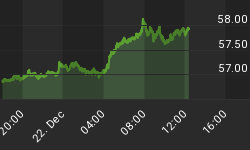The following article is based on analysis from Robert Prechter's Elliott Wave Theorist. For more insights from Robert Prechter, download the 75-page eBook Independent Investor eBook. It's a compilation of some of the New York Times bestselling author's writings that challenge conventional financial market assumptions. Visit Elliott Wave International to download the eBook, free.
If you want the latest news on the U.S. Dollar Index, try a search under its new ticker symbol, RIP. -- as in, "rest in peace." Let the record show: In the early morning hours of Tuesday, October 6, the mainstream financial community officially declared "The Demise of the Dollar" (The Independent).
The "coroner's report" cites these details as the causes of death:
- An alleged (and later denied) secret meeting among leaders of certain Arab States, China, Russia, and France which aimed for the immediate discontinuation of oil trading in U.S. dollars.
- And, an open statement from one senior United Nations official that proposed the dollar be replaced as the world's reserve currency.
In the words of a recent Washington Post story: "The growing international chorus wants the dollar replaced... a move that would end the greenback's six-decades of global dominance."
And with that, the line between negative sentiment -- AND -- "EXTREME" negative sentiment was crossed. It occurs when the beliefs about a market lean so far over in one direction, that the boat investors are sitting in is about to tip over... Just like the last time.
Case in point: Spring 2008. The U.S. dollar stood at an all-time record low against the euro after plunging more than 40% in value. And, according to the usual experts, the greenback was "dead"-set to meet its maker. On this, these news items from early 2008 say plenty:
- "The dollar is a terribly flawed currency and its days are numbered." (Wall Street Journal quote)
- "It's basically the end of a 60-year period of continuing credit expansion based on the dollar as the world's reserve currency." (George Soros at the World Economic Forum)
- "Greenback is losing Global Appeal... the 'Almighty' Dollar is Gone." (Associated Press)
YET -- from its March 2008 bottom, the U.S. dollar came back to life with a vengeance, soaring in a one-year long winning streak to multi-year highs. In the most current Elliott Wave Theorist (published September 15, 2009), Bob Prechter presents the following close-up of the Dollar Index since that trend-turning bottom. (some Elliott wave labels have been removed for this publication)

At a measly 6% bulls, the bearish dollar boat tipped over. The situation today is even more remarkable: The percentage of bulls is lower, at 3-4%, while the dollar's value is higher than the March 2008 level.
It's crucial to understand that markets don't necessarily respond to sentiment extremes immediately. But, such extremes do indicate exhaustion of the trend -- which is usually the opposite of what the mainstream expects.
For more information, download Robert Prechter's free Independent Investor eBook. The 75-page resource teaches investors to think independently by challenging conventional financial market assumptions.















